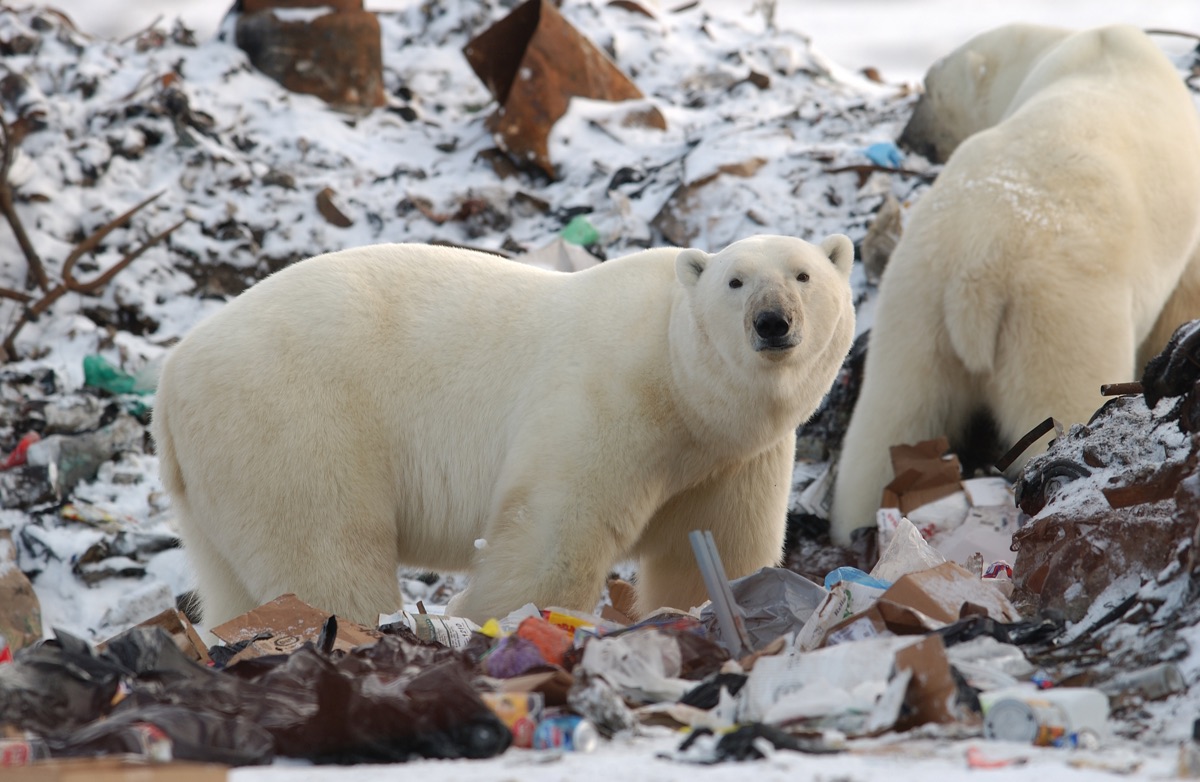52 Polar Bears 'Invade' a Russian Town to Eat Garbage Instead of Starve to Death

Fifty-two hungry polar bears have occupied Guba, a work settlement in a remote Russian Arctic archipelago. The animals reportedly attacked locals, ransacked garbage dumps and barged into residential buildings, according to a government statement translated from Russian and released this weekend.
The massive invasion of polar bears prompted regional officials to declare a state of emergency on Saturday (Feb. 9).
"People are scared, afraid to leave the house … afraid to let their children go to school," Zhigansha Musin, a local school administrator, said in the statement. "Constantly in the village are from six to 10 polar bears."
Belushya Guba is a settlement of about 2,000 people in Russia's remote Novaya Zemlya archipelago, which is best known for its spooky plankton blooms and apocalyptic nuclear bomb tests. It's not uncommon to see polar bears near the area's southern coasts, where they regularly converge in winter for seasonal seal hunts, according to Russia's state-run news site TASS. [The Frozen North: Stunning Images of Russia from Above]
However, thinning sea ice caused by global warming likely drove the bears inland in search of more readily available meals, researchers from Moscow's A.N. Severtsov Institute of Ecology and Evolution, a branch of the Russian Academy of Sciences, told TASS. The allure of edible waste in Belushya Guba's garbage bins and dump sites likely stopped the bears from migrating farther north, the researchers said.
But dumpster diving isn't all the beasts are doing. Photos and videos posted over the weekend show the bears traipsing through empty schoolyards and even infiltrating the corridors of office buildings in search of food.
To protect the town, locals have built extra fences around schools and other sites, while special patrols try to scare off the bears with cars and dogs. These measures have shown "no tangible results" in spooking the bears and a special task force of "experts" is en route to assess the worrisome situation, TASS reported
Get the world’s most fascinating discoveries delivered straight to your inbox.
Shooting or killing polar bears is prohibited by the Russian government — however, culling the most aggressive bears might become "the only and necessary measure to ensure safety" in Belushya Guba if an alternative isn't found quickly, the government statement said.
The bears, meanwhile, are enduring a crisis of their own. Polar bears are considered a vulnerable species around the world as global warming continues to diminish their sea ice habitats. In the Arctic, where the world's estimated 22,000 to 33,000 polar bears live, average temperatures are warming twice as fast as the rest of the world, resulting in huge declines in sea ice every year, according to a December 2018 report released by the National Oceanographic and Atmospheric Administration (NOAA).
As sea ice melts, polar bears have to travel farther and work harder to catch seals, causing some to starve to death in the process. Others — like those that crashed Belushya Guba — would rather eat garbage, it seems.
- The Reality of Climate Change: 10 Myths Busted
- 10 Species You Can Kiss Goodbye
- The World's Biggest Beasts: Here and Gone
Originally published on Live Science.

Brandon is the space / physics editor at Live Science. With more than 20 years of editorial experience, his writing has appeared in The Washington Post, Reader's Digest, CBS.com, the Richard Dawkins Foundation website and other outlets. He holds a bachelor's degree in creative writing from the University of Arizona, with minors in journalism and media arts. His interests include black holes, asteroids and comets, and the search for extraterrestrial life.
 Live Science Plus
Live Science Plus





